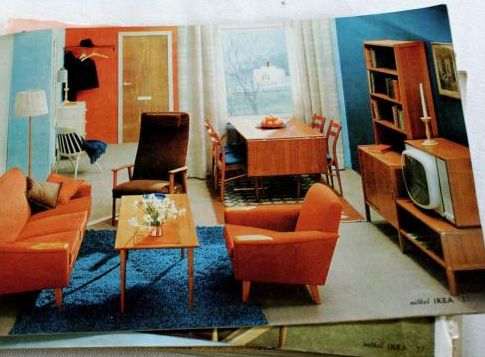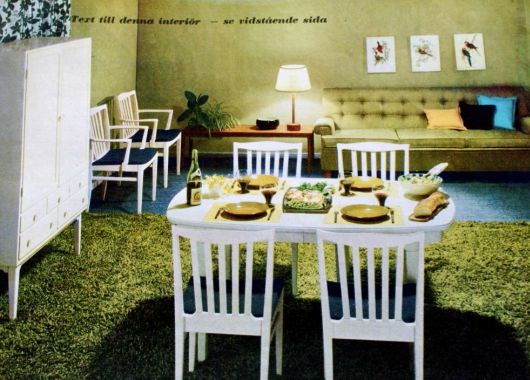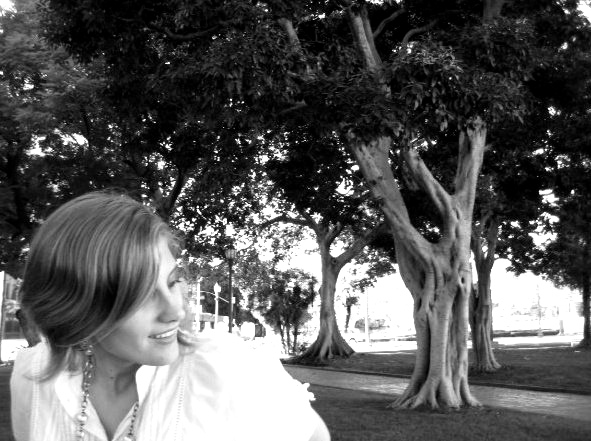 FILM
FILM « In Which We Furnish Our Life With The Usual »
 Friday, October 14, 2011 at 10:22AM
Friday, October 14, 2011 at 10:22AM On the fiftieth anniversary of Breakfast at Tiffany's...

The Proud Look of It
by KARA VANDERBIJL
None of my memories from childhood involve creaky swings in an overgrown backyard or lemonade on the porch. In fact, our homes rarely had backyards and our porches have never been the kind you drink lemonade on. We've always been apartment-dwelling city folk, and growing up the idea of playing outdoors was so alien to my brother and I that when we finally moved into a house with a honest-to-goodness backyard, we rarely spent any time in it.
(Before you notify anybody about this, you should know that we both turned out fine.)
Without a venue for our antics, we had to find unconventional ways to amuse ourselves. So it was always a treat when Mom would disappear shortly after lunch and reappear with lipstick on, a sure sign that adventure was around the corner. We'd buckle into our ancient Honda (named Henri, not to be confused with Henry) and sit in excited discomfort until the air-conditioning kicked in. Then it was wherever the 405 freeway could take us & the sky was the limit.
Sometimes it involved strolling down Olvera Street. Sometimes we'd drive to a tiny library and check out half of their children’s books. Sometimes we'd visit a really fancy grocery store far away from our house, the only establishment at the time that sold Orangina in individual pear-shaped glass bottles.
On really good days, we'd visit IKEA.

When you don't live in one place for very long and you can't afford fancy furniture that might break when you haul it halfway across the world, IKEA becomes a sort of haven. After all, it’s exactly the same everywhere on the planet. You know that if you're in Europe somewhere and you have a sudden hankering for four-dollar Swedish meatballs you can walk in and get a plate of them for four euros. You know that if you’re stranded you can just walk in and collapse onto any sofa and no one will tell you to leave. You know that if you forgot a pen there will always be golf pencils available in a plastic box on the wall. And so on.
I’m not quite sure how they do it. Somehow, with a few dashes of blue and yellow paint and bizarre Swedish names, something as normal and unexciting as a furniture store can become everything from an exotic wonderland to a comfortable evening at home in front of the fire. As a child I had fantasies of moving in—pitching a tent in the shortcut between the light bulb section and the kids interior décor section and calling it home. Other times I would choose endless combinations of sofas and coffee tables and kitchens, just so that I’d be set when I grew up and got my own place. I still have a crazy habit of classifying furniture in “best look for best price” every time I walk through the showroom.

Later on, when my family did end up moving halfway across the world, it was comforting to know that most of our furniture would still be from IKEA. Our bookshelves would come in flat boxes and our sofas would come covered in bubble wrap. Our tea lights would still come by the hundred in plastic bags. There would always be exactly the right amount of screws to construct each piece of furniture. IKEA, by far the most empathetic of anybody we came into contact with, understood that we still couldn’t speak French and provided assembly instructions in ten different languages for our convenience. The ice cream was still only fifty cents.
When I grew up and moved away for college, some of the first things I bought to spruce up a stark dorm room came from IKEA. When we had papers to write and needed an excuse to run away for a while, IKEA offered the cheapest vittles in town. I’ve had dates at IKEA and I’ve had some of the best family dinners over Christmas break at IKEA. There’s no better place to go after a movie, to digest sushi, or to find random odds and ends nobody else sells. It’s there if you need a restroom or if you’re homesick or if you’re PMSing.
It’s a lot like Breakfast at Tiffany’s.

Even those who have never seen Blake Edwards’ 1961 film are familiar with the timeless image of Audrey Hepburn smiling enigmatically in a little black dress and pearls, a cigarette just inches from her mouth. Hepburn plays Holly Golightly, a New York socialite who takes interest in her new neighbor Paul Varjak (played by George Peppard) and drags him into a glamorous world of parties and scandalous escapades. While she maintains a poised and elegant front for the men who want her company, she moonlights as a vulnerable and neurotic young woman who just wants to find her place and someone to share it with.
In an iconic opening sequence, a lone yellow taxicab glides up Fifth Avenue and stops for a young woman to emerge. It’s early in the morning and “Moon River” is playing in the background and before we know anything about Hepburn’s character Holly Golightly, we already feel the displacement and loneliness she feels looking into the windows of Tiffany’s jewelry store. With her pastry and cheap cup of coffee she just doesn’t belong, no matter how she’s dressed or who she entertains. As the movie progresses, the boutique becomes a symbol of everything Holly wants, just out of her reach behind pristine display windows.

“You know those days when you get the mean reds? No, [not the blues], the blues are because you’re getting fat and maybe it’s been raining too long, you're just sad that's all. The mean reds are horrible. Suddenly you're afraid and you don’t know what you’re afraid of…well, when I get it the only thing that does me any good is to jump in a cab and go to Tiffany's. Calms me down right away. The quietness and the proud look of it; nothing very bad could happen to you there,” says Holly to Paul Varjak the first time they meet. "If I could find a real-life place that’d make me feel like Tiffany’s, then — then I’d buy some furniture and give the cat a name!"
There are many things I enjoy about the film. No matter what the snobs say, it has a lot to offer as far as critical analysis goes. But on a purely superficial level, that line of Holly's grabs me every time and won’t let go. Maybe it's because there is no word in French for home and sometimes I wake up in the middle of the night and I'm not sure if I’m in the aisle seat or in somebody’s spare room. Maybe it’s because I’ve fallen prey to the common female problem of wanting to identify with Audrey Hepburn. In any case, when I discovered Breakfast at Tiffany’s at age sixteen it quickly became my favorite film.

In college, a lot of other English majors were unsurprisingly surprised to discover this about me. It’s a well-known fact that if you're an English major you’re supposed to have favorite films like Memento and shun anything resembling a romantic comedy (unless it’s (500) Days of Summer). Second, when you look past the glitz and glamour of Hepburn’s performance, there really isn’t much to be said of Breakfast at Tiffany's. You could complain about the blatant racism, express concern at the excessive drinking, or write it off as a waste of time. Truth is, it just doesn’t have much of a plot. From the moment Holly Golightly emerges from the taxicab to eat her pastry in front of Tiffany’s to the moment she and Cat fall into Paul Varjak’s arms, the film is just a series of seemingly unrelated events that happen to bring two people together in the end.

In reality, Breakfast at Tiffany's is a fantasy. It is a story of two unlikely people falling in love in a New York that only exists in dreams. It’s a world where the streets of Manhattan are empty and mafia members are just kind old men in Sing-Sing. It’s a world where Brazilian politicians fall in love with escort girls, where people in New York actually know their neighbors, where Tiffany’s engraves romantic messages on Cracker Jack prizes, and where happiness is drinking champagne for breakfast. Holly Golightly is a "real phony", a character so unbelievably believable that we want to have faith in her fantasy. In a world full of divorce and dead younger brothers and financial hardship, we want to believe that going to Tiffany’s can make everything better.
After all, maybe that’s the reason we do anything — maybe that’s why we go to movies, and make love, and throw pennies into the Fontana di Trevi in Rome. Maybe that’s why we find comfort in Swedish furniture. We’re just looking for a real-life place like home. But then again, maybe you’re not like me and you’ve already found those people and places that are as comfortable to you as golf pencils and cheap meatballs are to me. I hope you have.
Kara VanderBijl is the senior contributor to This Recording. She is a writer living in Chicago. She last wrote in these pages about Downton Abbey. You can find her website here. You can find an archive of her writing on This Recording here.

"A Case of You" - James Blake (mp3)
"Fall Creek Boys Choir" - James Blake & Bon Iver (mp3)
"Once We All Agree" - James Blake (mp3)































Reader Comments